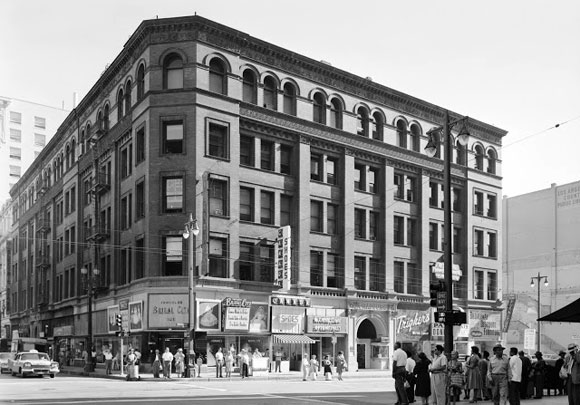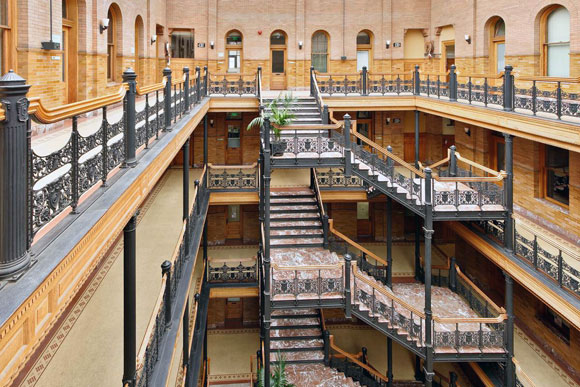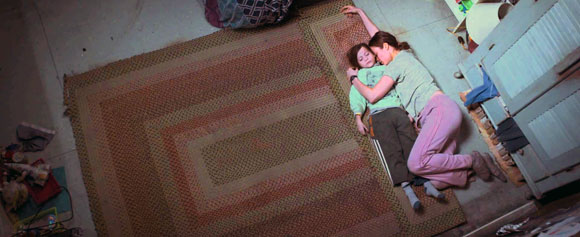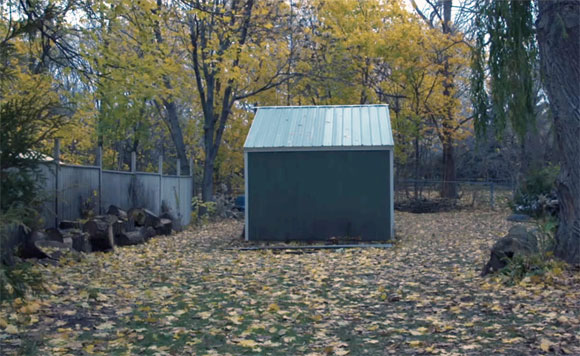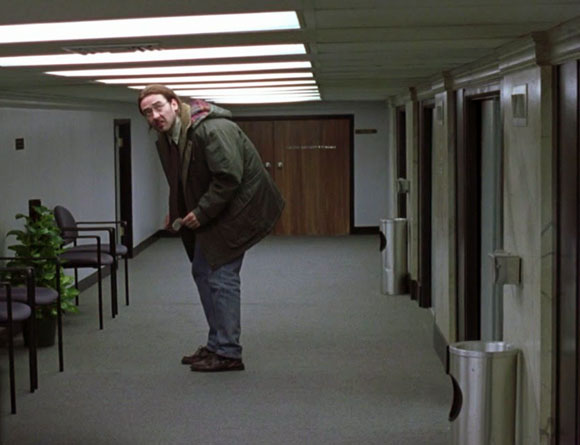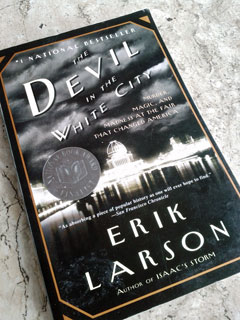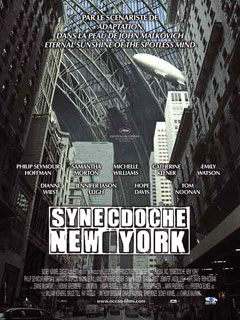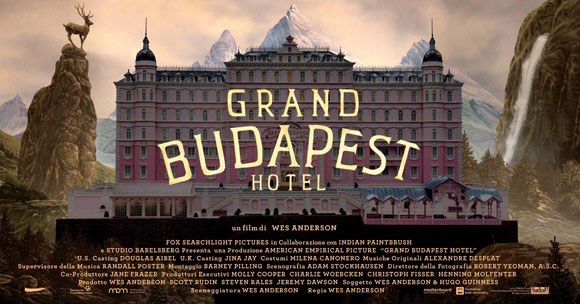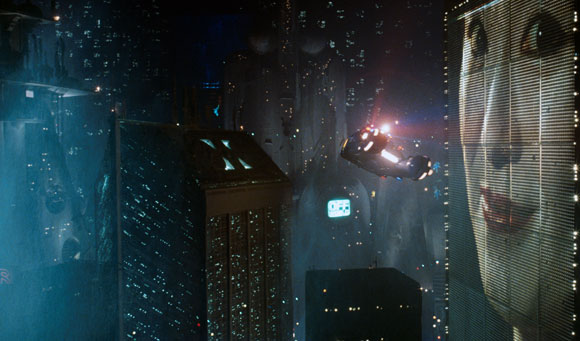TIMELESSNESS: THE MANY LIVES OF THE BRADBURY BUILDING
Atrium of the Bradbury Building (photo from ruebarue.com)
In 1893, architect Sumner Hunt served up the beloved Bradbury Building, a jewel in the gritty South Broadway area of downtown Los Angeles. To talk about the building’s elegance is akin to commenting on the freshness of the sushi from world-acclaimed chef Jiro One.
Rather than discuss the obvious beauty of the Bradbury, I am more fascinated by the architecture’s numerous chapters of evolution and interpretation. There are many lives to this iconic building, from film to music videos. Why and how?
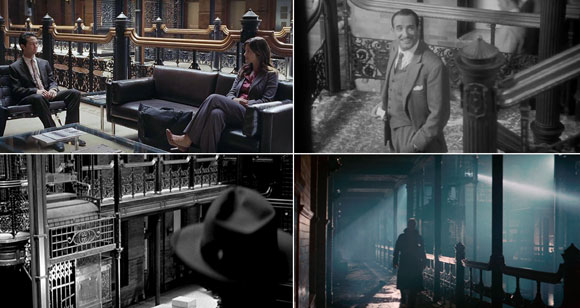
Following the Bradbury Building’s 1971 Landmark status from the National Register of Historic Places, the building fell into sad disrepair. In 1982, the sci-fi cult classic, Blade Runner, exploited the deteriorating building, reinterpreting the once glorious Renaissance Revival style, into a goth dystopian backdrop. Prior to this, film noir of the 40’s and 50’s appropriated the building for haunting backdrops.
The Bradbury Building also found its way into dozens of movies of all types, from Chinatown in 1974 to Lethal Weapon in 1988, from Pay It Forward in 2000, to (500) Days of Summer in 2009.
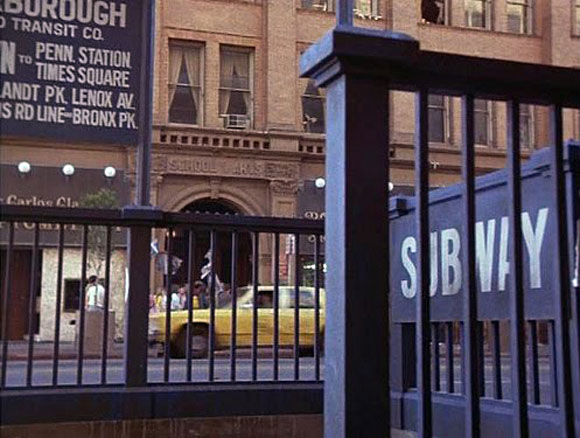
For television, the Bradbury offered its architecture for the 60’s series, Outer Limits, as well as to Mission Impossible, from the 70’s. In the 80’s, the building represented the performing arts high school in Fame, and more recently, a setting for CSI NY. In both of these, this Los Angeles building was ironically and oddly the best choice to represent the backdrop of New York City.
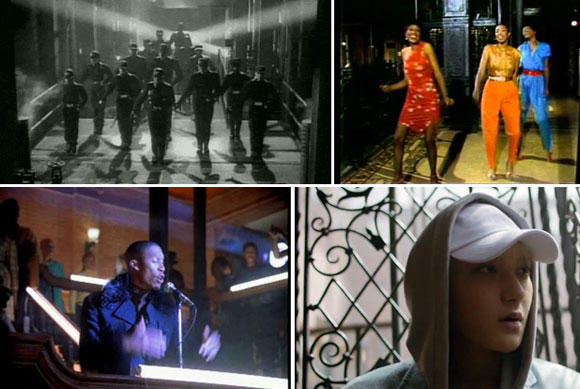
Music videos have also seized the Bradbury design for various moods and vibes over the decades, to include stars such as Janet Jackson, Earth Wind and Fire, Genesis, The Pointer Sisters, and even Chinese pop sensation, Huang Zitao. And don’t forget Justin Timberlake’s current hit, Say Something.
Going further into pop culture, DC and Marvel Comics created comic book characters that occupied the Bradbury Building. The actual offices of Marvel Comics had the real Bradbury Building as its home.
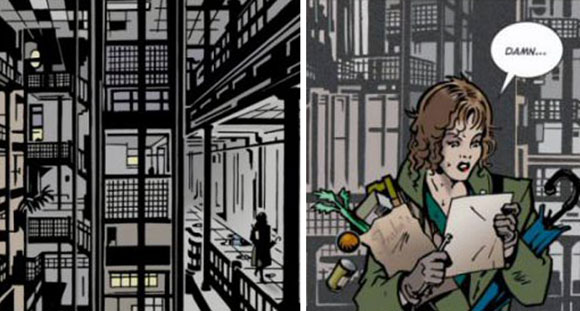
What is it about this one building that makes it the canvas for so many different brush strokes and stories? I argue that the Bradbury design is timeless and essential, if such concepts exist.
(A side note: Nearly every client of mine requests a design that is “warm, welcoming and timeless.” I chuckle a little, because when a client asks for these qualities, they proclaim their desires as if it was an original idea, as if it wasn’t already so obvious and cliché. I have yet to hear a client state, “I want a design that is uninviting, full of fads and will quickly go out of style!”)
How is timelessness captured? A traditional house with a porch and columns, for example, appears timeless to some, but to others, it might simply be old fashion, like some grandmother’s cottage. On the other hand, a Zaha Hadid design might appear timeless because it looks to the future. But for many critics, her architecture will only be recognized as a product of a certain chapter in time.
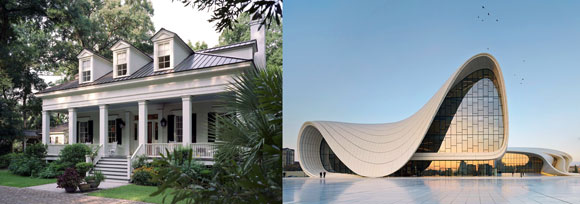
The many lives of the Bradbury Building speak to a timeless design because it succeeds at the essence of architecture, without ever being stylistic. The architecture excels at something as basic as how natural light transforms the sense of place throughout each hour of the day. In addition to Hunt’s thoughtful use of textures, colors and craft, this designer carefully explored the essentials of architecture. Space, proportion and air places the Bradbury Building in history. And I look forward to its next 100 years.
